Before your trip
It is easy to be a traveller at the Angelholm Helsingborg Airport. The airport has a good location and excellent communication with all of Skåne and Halland.
You may have some questions about how things work when flying from here, so we have put together the most important information for you. For example, what should you consider when checking in? How do we accommodate for those with reduced mobility? How can you travel best with children? Do you need a passport when travelling abroad? If you cannot find the answer to your questions on our website, please feel free to contact us.
Read more about:
Carry-on luggage
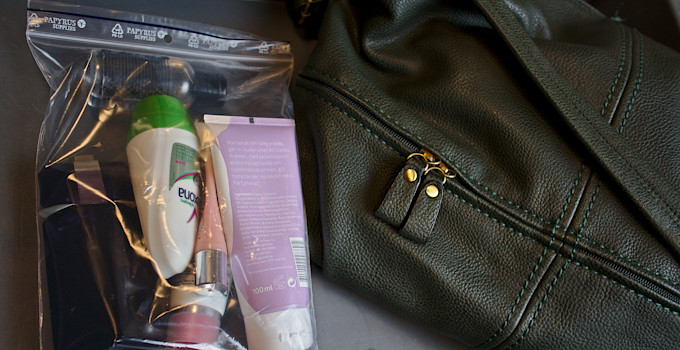
Carry-on luggage taken onboard the aircraft must fit into the overhead bins.
The maximum size of a bag is 56x45x25 cm.
The number of bags you may carry with you is determined by each airline. Otherwise, the new rules formed in 2006 apply for carry-on luggage and also include limits on the amount of liquids that may be brought on.
Travelling with children

Tips on how travelling with children can be facilitated.
• Be on time so that neither children nor adults are stressed, at least one hour before departure for domestic flights and two hours prior to departure for international flight
• Let the kids run around before boarding.
• Mark the children with your cell phone number if you would come apart.
Babystroller to borrow
Most airlines want babystroller to be checked in. If you need a babystroller after the check in there are babystrollers available for loan in the departure hall or at the security checkpoint. You can keep the babystroller up to departure time.
Playground
On Ängelholm Helsingborg Airport there is a childrens corner in the departure hall.
Nursery facilities
Baby nursery facilities can be found at both the check-in hall and departure hall
Assistance Service for unaccompanied minor (UM)
From the age of five, children can travel without an adult and most airlines offer assistance service for children between five and eleven years.
Assistance service means that the child:
• is taken care of before the flight and escorted to the aircraft,
receive special attention and assistance in the case of a delay or other interference
• will be met by staff at the gate
The terms of the airlines is that the child is picked up and returned by a named person at each airport. When you are leaving the child you will be asked to help with the formalities of checking in and to remain at the airport until the aircraft has taken off.
Book well in advance with the airline
Check with your airline if there is an additional fee for unaccompanied minor and if there is any other rules to keep in mind. It is important to book your trip well in advance as the number of unaccompanied minors per flight is limited.
Be on time so that neither children nor adults are stressed, at least one hour before departure for domestic and two hours prior to departure at the international flight
Travelling with animals
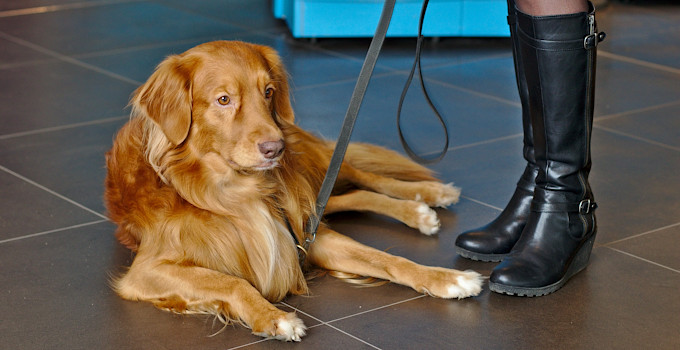
Domestic
Smaller pets, such as dogs and cats, can accompany you on the flight as long as they are in a cage or bag. The cage or bag must not exceed the weight and measurement applicable to the cabin. The airlines will usually charge a fee for the animal, except for guide dogs. When you book your ticket, it is important to state that you are bringing the animal on the aircraft, as the number of animals onboard is limited. Larger animals can be shipped as air cargo under special rules. Contact your airline for more information about what is appropriate to your trip.
International
In the summer of 2004, the rules were simplified for international travel with dogs and cats when the so-called pet passport was introduced. Besides the EU countries, you must always have a passport for your animal when travelling to Norway, Switzerland, San Marino and Liechtenstein. If the dog lacks a valid rabies vaccination, it may take some time (4-5 months) before the passport is given. Contact your airline or tour operator to find out the details. Go to the Swedish Board of Agriculture website to find all the rules for the entry and exit of dogs, cats and other animals, as well as the required forms.
Medicine on your trip
Within the EU and EES
Medicine and baby food are exempt from the new, stricter rules for carry-on luggage. You can take as much prescription medicine as needed in your carry-on luggage. Medicine does not need to be in plastic bags, but remember to pack liquid medicine in plastic bags so you can show them at airport security control.
Non-prescription medicine (lens solution, cough syrup, nose drops, etc.) can be taken on the flight. You can also bring your prescription medicine for the duration of your absence if you are unsure whether you can buy the product at your destination, or if it is only available in larger packages.
In order to bring narcotic drugs for personal use in the EU-EES countries, you must present a certificate that proves your right to take your medicine. This includes narcotic drugs such as sleeping pills, sedatives and strong painkillers. You must also ask the pharmacy to receive a so-called Schengen Certificate that allows you to carry these medicines.
Outside EU and EES
If you travel from Sweden to countries outside the European Economic Area, please visit the country’s embassy to become informed about the rules that apply to the importation of narcotic drugs. You should always be able to prove, with a statement, that the drugs you carry are intended for personal, medical use. Contact your airline to learn about what applies to your particular destination.
Mobility assistance at the airport
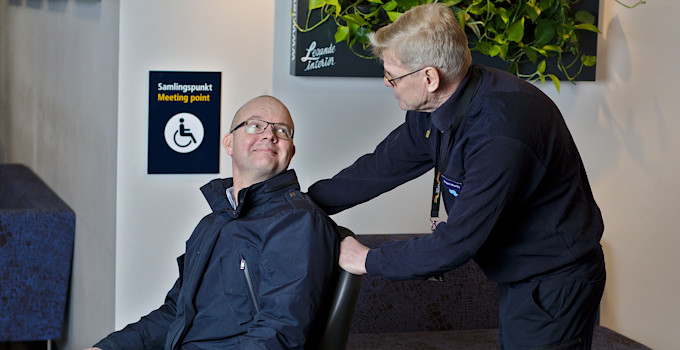
Passengers who need mobility assistance have the same opportunities to enjoy air travel just like other passengers. Therefore, the airport is obliged to provide escort services for people with special needs. If you need help, you should always disclose it when you book your airline ticket. The airport escorts will help you find your way through the airport and help you on board the aircraft. On the other hand, assistants do not attend to you if you have to use the toilet. If this is the case, you should travel with your own companion who can assist you.
On board the aircraft, cabin staff will assist you with information and escort you to your seat. However, they will not lift you or assist you to the toilet. If you have such needs, you should travel with a companion who can assist you. Talk with your airline regarding what applies to your particular journey.
Wheelchairs and other assistive devices carried on the aircraft are at no cost. However, you should check that the weight and measurement do not prevent its shipment. It is not clear if larger electric wheelchairs can fit in all types of aircraft. On board the aircraft, you can, if necessary, borrow a wheelchair that is adapted to function in the cabin.
Guide dogs may be brought on the aircraft at no extra cost. The dog travels in the cabin and does not have to sit in the transportation box. The rules for bringing a guide dog differ between airlines. Therefore, please always check with your airline and find out what applies to your journey.
Air passenger rights

EU regulations, which came into force in 2005, ensure that air passengers are compensated if a problem arises during a flight. Airlines are obliged to know the rules and should inform their passengers about what rules apply. You can read more about passengers’ rights at the European Commission website.
Security control
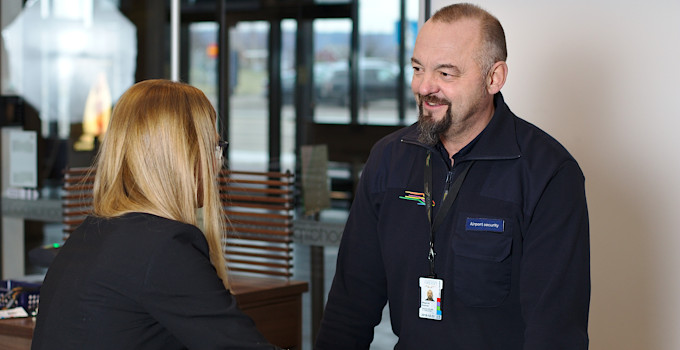
It is mandatory for all travelers to pass through the security checkpoint. The aim is to find items that are prohibited to bring on board the plane, and in so-called restricted areas, areas travelers find themselves in after gone through security checkpoint and before boarding the plane.
If you prepare yourself before entering the security checkpoint it will go more smoothly and quickly.
Passport and visa
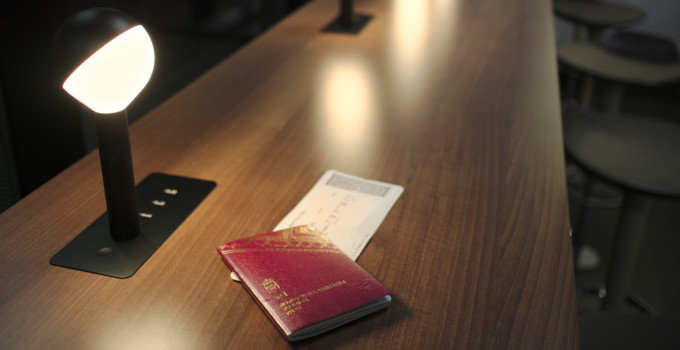
For travel within the Schengen countries, you do not need to show your passport at passport control, but you should take your passport —or your new national identity card — because you must prove your nationality when you’re abroad. For travel outside the Schengen countries, you should always carry your passport. You can order a passport and ID card at the police station.
Visa
In order to enter certain countries, including the U.S., you need a visa. For information about the arrangements for the country you are heading to, please ask your airline.
ID check
Sweden has introduced requirements for the identity verification of passengers at check-in and boarding, with both domestic and international departures. In addition, you must have a boarding pass to go through security. Please be aware that other EU countries may have stricter rules than these.
Personal control
When travelling to countries that are a part of the Schengen agreement, there are usually no personal checks, but you still have to show your passport or national identity card. When travelling to countries not included in the Schengen agreement, there are usually personal checks and you must always have your passport.
A national identity card replaces a passport within Schengen countries
A national identity card was introduced on October 1, 2005. This card contains information with regard to your Swedish citizenship. This means that the new identity card can be used for travel within the Schengen countries and can also be used for proof of citizenship. For those who do not have the new ID card, it is required to have your passport for travel within the Schengen countries. You can apply for a national ID card at police passport offices.
